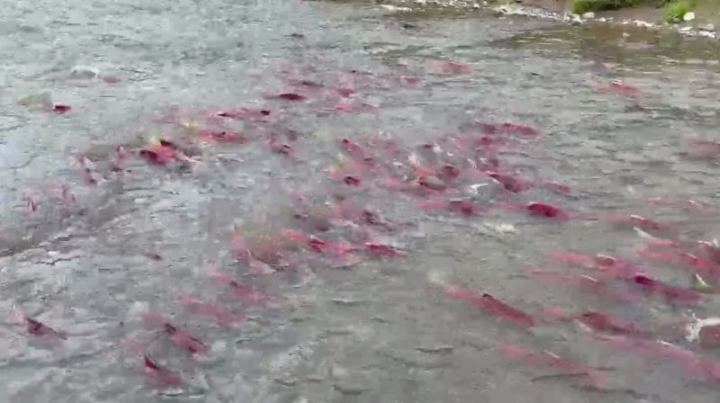
A breathtaking natural spectacle is currently unfolding in Russia’s remote Far East, as countless sockeye salmon have begun their mass spawning run in the South Kamchatka Federal Sanctuary. The Khakytsin River, a tributary of the pristine Kurilskoye Lake, is now teeming with fish, marking the start of a crucial cycle for what is considered the largest sockeye salmon population in all of Asia. This event, monitored by the Kronotsky Nature Reserve, underscores the global ecological importance of this protected wilderness.
The journey of these salmon is an epic of endurance and instinct. After hatching in the freshwater streams of Kamchatka, the young fish migrate down the Ozernaya River to the Sea of Okhotsk and then into the vastness of the Pacific Ocean. After several years of growing and maturing in the ocean, a powerful homing instinct guides them back across thousands of miles to the very same riverbeds where they were born. This incredible migration is a cornerstone of the Pacific marine ecosystem.
Upon re-entering freshwater, the salmon undergo a dramatic transformation. Their sleek, silver bodies, adapted for the ocean, turn a brilliant, deep red. The males develop pronounced humps on their backs and their jaws elongate into a distinctive hook, while their heads take on a greenish hue. This startling change in their appearance, known as their ‘nuptial dress’, signals their readiness to complete the final and most vital chapter of their lives: reproduction.
Once in their native streams, the salmon pair up to spawn. The female digs a nest in the gravel, known as a redd, and deposits thousands of eggs, which the male then fertilizes. For a short time, the parents fiercely guard their nest against predators like char. Having fulfilled their biological purpose, the adult salmon’s journey comes to an end. Their bodies, weakened by the arduous journey and the process of spawning, begin to break down. Their death, however, is not an end but a new beginning, as their nutrient-rich carcasses become a vital source of food for the entire ecosystem, fueling the very food web that will sustain their own offspring and ensure the continuation of this magnificent natural cycle.